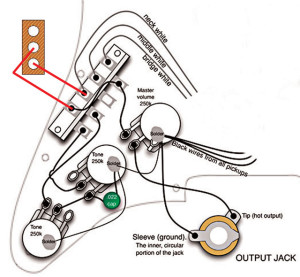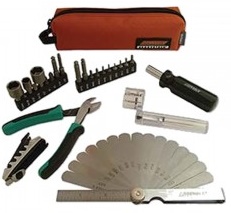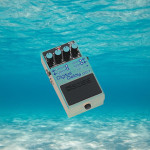Language
Preventing Water Damage On A Wet Guitar Effects Pedal
Water damage is the bane of electronics. If you’ve ever had the misfortune of dropping your phone in the toilet or spilling Mountain Dew on your computer, chances are not great that your equipment will remain unscathed. And while new smartphones like iPhone 7 and several Android devices are now finally resistant to damage from getting wet, your effects pedals still aren’t. So, what do you do in case you accidentally spill some liquid on your beloved stompboxes? In today’s article, we take a look at what steps you can take to keep your wet investments from becoming expensive paperweights.
 Check Out Some Other Repair Tips: Replacing The Output Jack On An Electric Guitar[/caption]
When it comes to dealing with potential water damage, there are two items you should have near you at all times, either in your gig bag, vehicle, or anywhere else where you can grab them quickly – distilled water and isopropyl (rubbing) alcohol. Chances are, whatever spilled on your pedal isn’t pure water (tap water isn’t pure, obviously), and the conductive residue (such as salts) that is left behind once it dries can easily cause damage by shorting out parts of the unit. The role of the distilled water is to flush out all of the impure liquid that was spilled. Try to avoid getting water in the switches as it will be very hard to remove the moisture later on. After you have rinsed off the pedal sufficiently, do the same with the rubbing alcohol. The role of the alcohol is to pick up the water, absorb it, and evaporate it quickly. Alcohol naturally attracts water and it also evaporates much quicker than water. Once you have finished rinsing your pedal, it’s time to clean it out.
Check Out Some Other Repair Tips: Replacing The Output Jack On An Electric Guitar[/caption]
When it comes to dealing with potential water damage, there are two items you should have near you at all times, either in your gig bag, vehicle, or anywhere else where you can grab them quickly – distilled water and isopropyl (rubbing) alcohol. Chances are, whatever spilled on your pedal isn’t pure water (tap water isn’t pure, obviously), and the conductive residue (such as salts) that is left behind once it dries can easily cause damage by shorting out parts of the unit. The role of the distilled water is to flush out all of the impure liquid that was spilled. Try to avoid getting water in the switches as it will be very hard to remove the moisture later on. After you have rinsed off the pedal sufficiently, do the same with the rubbing alcohol. The role of the alcohol is to pick up the water, absorb it, and evaporate it quickly. Alcohol naturally attracts water and it also evaporates much quicker than water. Once you have finished rinsing your pedal, it’s time to clean it out.
 Cruztools GTSH1 Stagehand Compact Tech Kit @ $34.95. The new Stagehand kit has everything you need to keep your guitar, bass, pedals and other equipment in good shape! Featuring a 19-piece magnetic bit set and screwdriver-style bit holder, with both inch and metric hex wrenches, screwdrivers, and sockets to several different situations, all in an ultra-compact pouch that is ready to hit the road!
Cruztools GTSH1 Stagehand Compact Tech Kit @ $34.95. The new Stagehand kit has everything you need to keep your guitar, bass, pedals and other equipment in good shape! Featuring a 19-piece magnetic bit set and screwdriver-style bit holder, with both inch and metric hex wrenches, screwdrivers, and sockets to several different situations, all in an ultra-compact pouch that is ready to hit the road!
As mentioned above, it can be very hard to remove water that made its way inside the switch mechanism. If the switch works as intended after the pedal dries, it should be fine. They are usually well sealed so water might not have gotten in there, but it’s possible. If you have problems with the switch, you can try taking it apart and cleaning it, but it might just be better to replace the entire thing. You can check out the video below for general information on how to disassemble and clean out a switch. And finally, any material that can hold onto water – such as foam or pieces that hold the batteries – should be replaced or removed until they have had time to dry out.
 Here at ProAudioLand, we offer a large selection of some of the best effects pedals around, including the awesome Seymour Duncan Vapor Trail Analog Delay. Hit the link below to browse our entire selection! If you have any questions regarding the purchase of any other piece of gear we carry, don't hesitate to chat with one of our friendly PAL pros by using the live chat feature below or by calling us toll-free at 1 877-671-2200!
Guitar Effects Pedals / Bass Effects Pedals
Here at ProAudioLand, we offer a large selection of some of the best effects pedals around, including the awesome Seymour Duncan Vapor Trail Analog Delay. Hit the link below to browse our entire selection! If you have any questions regarding the purchase of any other piece of gear we carry, don't hesitate to chat with one of our friendly PAL pros by using the live chat feature below or by calling us toll-free at 1 877-671-2200!
Guitar Effects Pedals / Bass Effects Pedals
Unplug Your Wet Pedal!
First and foremost, it should be said that the steps below are not guaranteed to work, but the faster you act after the spill happens, the better your chances are. The very first thing you most definitely have to do in case your pedal gets wet and you want to prevent water damage is to unplug it (but be smart and make sure you won’t be shocked when doing so). If it’s powered by a 9-volt battery, remove it.Rinse Your Pedal
[caption id="attachment_5810" align="alignright" width="196"] Check Out Some Other Repair Tips: Replacing The Output Jack On An Electric Guitar[/caption]
When it comes to dealing with potential water damage, there are two items you should have near you at all times, either in your gig bag, vehicle, or anywhere else where you can grab them quickly – distilled water and isopropyl (rubbing) alcohol. Chances are, whatever spilled on your pedal isn’t pure water (tap water isn’t pure, obviously), and the conductive residue (such as salts) that is left behind once it dries can easily cause damage by shorting out parts of the unit. The role of the distilled water is to flush out all of the impure liquid that was spilled. Try to avoid getting water in the switches as it will be very hard to remove the moisture later on. After you have rinsed off the pedal sufficiently, do the same with the rubbing alcohol. The role of the alcohol is to pick up the water, absorb it, and evaporate it quickly. Alcohol naturally attracts water and it also evaporates much quicker than water. Once you have finished rinsing your pedal, it’s time to clean it out.
Check Out Some Other Repair Tips: Replacing The Output Jack On An Electric Guitar[/caption]
When it comes to dealing with potential water damage, there are two items you should have near you at all times, either in your gig bag, vehicle, or anywhere else where you can grab them quickly – distilled water and isopropyl (rubbing) alcohol. Chances are, whatever spilled on your pedal isn’t pure water (tap water isn’t pure, obviously), and the conductive residue (such as salts) that is left behind once it dries can easily cause damage by shorting out parts of the unit. The role of the distilled water is to flush out all of the impure liquid that was spilled. Try to avoid getting water in the switches as it will be very hard to remove the moisture later on. After you have rinsed off the pedal sufficiently, do the same with the rubbing alcohol. The role of the alcohol is to pick up the water, absorb it, and evaporate it quickly. Alcohol naturally attracts water and it also evaporates much quicker than water. Once you have finished rinsing your pedal, it’s time to clean it out.
Clean Your Pedal
You can clean your pedal case and battery compartment with WD-40, as it is a great water displacing agent. While you can spray it on the pedal, I suggest putting some WD-40 on a rag instead and then use that to clean the pedal. Otherwise, it will be hard to get rid of the excess WD-40, not to mention it might drip around and start smelling. As for the jacks, a Q-tip with some WD-40 on it should work just fine. You can also spray a bit of WD-40 on the inside of the power jack. The pots (control knobs) are a bit different, as they can be easily damaged. For them, it is best to use an electronics spray lubricant/cleaner (such as WD-40 Specialist or Deoxit). Spray around the area where the pots are located and turn them back and forth several times. Afterward, just remember to get rid of any excess liquid with a rag or Q-tip. As for components such as chips, resistors, capacitors, and transistors, they are usually not damaged by being wet for a short amount of time, but leads can easily corrode. If you notice any flaky or powdery substances on the leads, wipe them off with a bit of electronics cleaner or WD-40. Cruztools GTSH1 Stagehand Compact Tech Kit @ $34.95. The new Stagehand kit has everything you need to keep your guitar, bass, pedals and other equipment in good shape! Featuring a 19-piece magnetic bit set and screwdriver-style bit holder, with both inch and metric hex wrenches, screwdrivers, and sockets to several different situations, all in an ultra-compact pouch that is ready to hit the road!
Cruztools GTSH1 Stagehand Compact Tech Kit @ $34.95. The new Stagehand kit has everything you need to keep your guitar, bass, pedals and other equipment in good shape! Featuring a 19-piece magnetic bit set and screwdriver-style bit holder, with both inch and metric hex wrenches, screwdrivers, and sockets to several different situations, all in an ultra-compact pouch that is ready to hit the road!
As mentioned above, it can be very hard to remove water that made its way inside the switch mechanism. If the switch works as intended after the pedal dries, it should be fine. They are usually well sealed so water might not have gotten in there, but it’s possible. If you have problems with the switch, you can try taking it apart and cleaning it, but it might just be better to replace the entire thing. You can check out the video below for general information on how to disassemble and clean out a switch. And finally, any material that can hold onto water – such as foam or pieces that hold the batteries – should be replaced or removed until they have had time to dry out.
Dry Your Pedal
Once you have cleaned out your pedal, you can use a hair dryer or heat gun to help the pedal dry out. You don’t want your pedal to get too hot, though, as some of the plastics and other materials found inside can begin to deform at much lower temperatures than expected. As long as your pedal doesn’t get hot to the point where you can’t hold it comfortably, you should be fine. If you try and dry your pedal before you clean it out, you might accidentally cause some of the residue from the spilled liquid to set it place, making it nearly impossible to remove later on. This is why you should only try and dry it out after sufficiently rinsing and cleaning the pedal. While the steps above might not guarantee your pedal will come out undamaged, it’s definitely worth a shot. Again, time is important when it comes to preventing water damage, so the faster you do the steps above, the better your chances at saving your pedal. Most of us are hardworking musicians who put in a lot of good hours to afford our devices, the last thing we need is for a little water damage to completely ruin them! Here at ProAudioLand, we offer a large selection of some of the best effects pedals around, including the awesome Seymour Duncan Vapor Trail Analog Delay. Hit the link below to browse our entire selection! If you have any questions regarding the purchase of any other piece of gear we carry, don't hesitate to chat with one of our friendly PAL pros by using the live chat feature below or by calling us toll-free at 1 877-671-2200!
Guitar Effects Pedals / Bass Effects Pedals
Here at ProAudioLand, we offer a large selection of some of the best effects pedals around, including the awesome Seymour Duncan Vapor Trail Analog Delay. Hit the link below to browse our entire selection! If you have any questions regarding the purchase of any other piece of gear we carry, don't hesitate to chat with one of our friendly PAL pros by using the live chat feature below or by calling us toll-free at 1 877-671-2200!
Guitar Effects Pedals / Bass Effects Pedals

